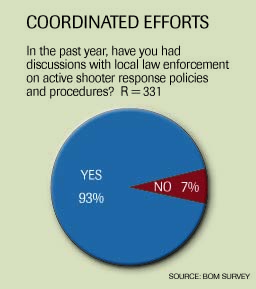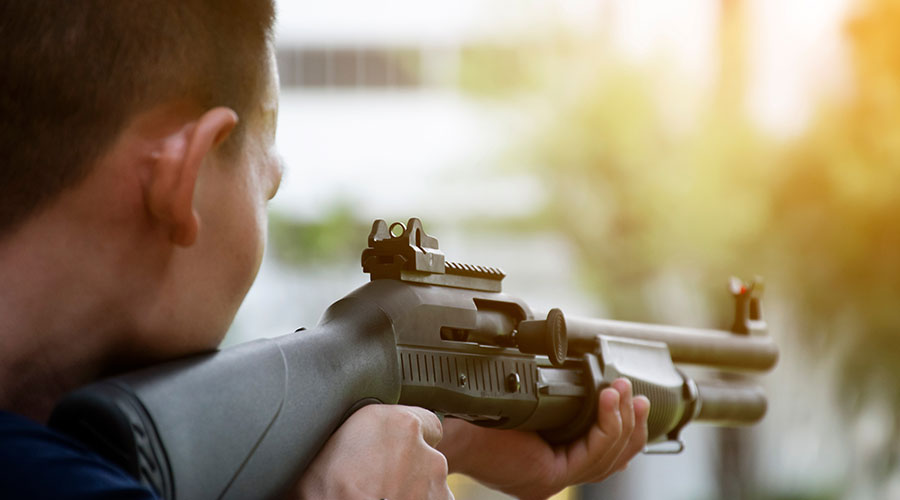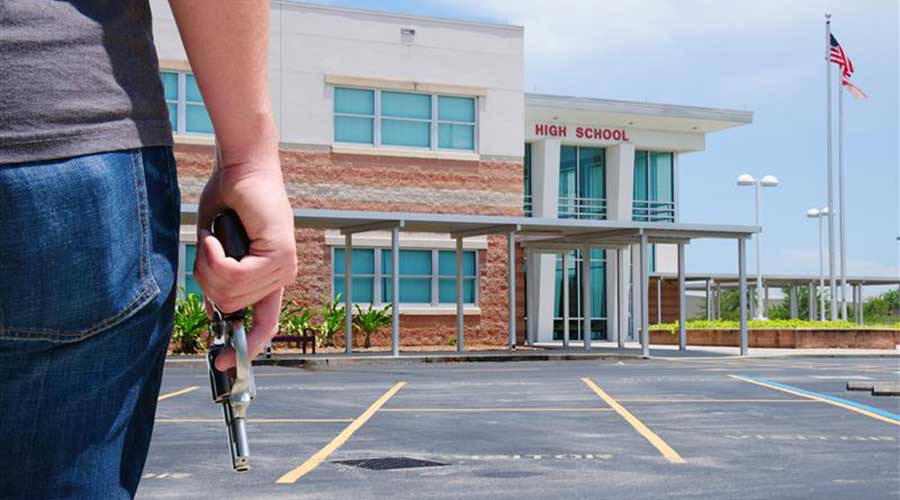K-12 Schools Should Practice Multiple Evacuation, Lockdown Drills
4. Practice a range of evacuation and lockdown drills. As the country has, unfortunately, grappled with more school shootings, the thinking on the most effective responses has evolved. Rather than one-size-fits-all tactics — say, huddle in the corner of the room — some school districts are instructing staff to, when appropriate, quickly size up a situation and decide the course of action they believe makes the most sense for their classrooms. "Most shooting incidents are over within five minutes," says Kevin Wren, director of safety, security, and environmental management with Rock Hill, S.C., Schools in the Charlotte, N.C., metropolitan area. "We have to empower them to make life-saving decisions."
Wren notes that adults' options when confronted with danger typically are to run, hide, or fight. However, the adults in a school building can't simply run and leave students behind. At the same time, expecting classrooms of students to safely run from a dangerous intruder — or fight one off — can be unrealistic.
So the order of actions might flip to "hide, run, then fight," Wren says. That doesn't have to mean "hide and die," he adds. If a teacher observes a suspicious intruder in a school building, he or she might alert the administration, while also locking down the classroom.
And as part of a lockdown, the teacher and students may take steps, such as shoving desks against the door, to make it more difficult for the intruder to enter the room, says Jim Presot, assistant superintendent with North Royalton, Ohio, School District, about 20 miles south of Cleveland. The goal is to delay the intruder, either until help arrives or until the students and staff can evacuate other than through the door.
On the other hand, if a shooter enters a large school building, staff and students near the shooter likely will go into lockdown mode, while those on the opposite side of the building and near another exit might evacuate, Klinger says.
Presot notes that the acronym "ALICE," has become common in discussions of school security. It stands for Alerting appropriate individuals of the danger; moving into the appropriate Lockdown arrangement; Informing staff of the nature of the danger; Countering the individual's actions; and finally, Evacuating the facility.
While most of the steps are fairly self-explanatory and agreed upon, the idea of "countering" a dangerous individual can be interpreted in different ways and has generated controversy, Presot says. Analyses of school shootings revealed some students who tried to fight a shooter who had entered their classroom — say, by throwing things at him or just by running around, making themselves moving targets — fared better than those who simply tried to duck and hide. "The idea is to reduce the amount of damage and if possible deter or restrain him," Presot says.
However, some have raised concerns about the idea. Trump notes that such actions may escalate, rather than neutralize a potentially dangerous situation. The approach also requires expecting students to make serious, life-and-death judgment calls — calls that even adults struggle to assess. "People are looking for the 'wow' but they're not thinking about the 'how' of implementation, which is where these extreme and questionable approaches to school safety tend to fall apart," he says.
The bedlam that accompanies actual shootings can make it difficult for even trained law enforcement officers to respond accurately and knowledgeably. That's the advantage of making drills as realistic as possible. By engaging teachers and staff in a role-play with, for instance, emergency responders and an actor playing the role of a shooter, "you start to feel what it's like in a chaotic nightmare. Who takes over? Who is incident commander?" says Richard Cuccolo, executive director of safety with Newark, N.J., Public Schools. "You can start to see what happens and the mistakes" — before lives are at stake.

Related Topics:














